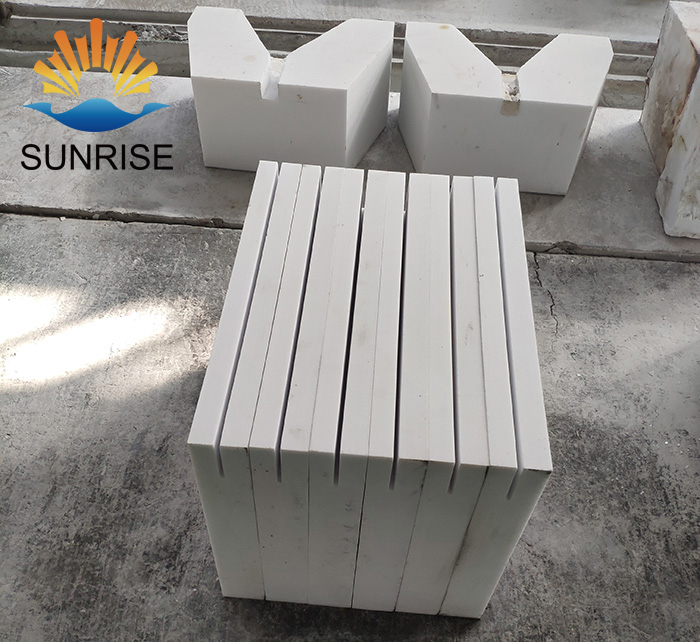Explore the Changes to Fused Zirconium Corundum in Glass Kilns?
Date:2019-12-17 16:12 From:Zhengzhou Sunrise Refractory Author:admin
The main components of fused cast zirconium corundum bricks are alumina, zirconia and silica. The English abbreviation is AZS, which means the first letter of the main component in English. During production, alumina, zirconia and silica are placed in an electric melting furnace, and after melting, they are cooled by injection molding. The petrographic structure consists of the eutectoid of corundum and zircon and the glass phase, and the glass phase is filled between the two crystals. Fused zirconium corundum bricks are mostly used in the construction of glass furnaces, and the components of different models are also different, which can be used in the construction of different parts of glass furnaces.
The glass kiln in use will withstand a high temperature of thousands of degrees. Under the severe test, what will happen to the fused zirconium corundum brick?

The fused-zirconium alumina material will undergo a crystallization process in a glass kiln. First, the zirconia will be precipitated once in the crystallizing space of the zirconia, and then the aluminum-zirconium eutectic will be precipitated on the eutectoid line of the zirconia and corundum. It is the glass phase and the remaining crystals. As one of the petrographic structures of fused cast zirconium alumina bricks, glass phase can reduce the melting temperature, expand the casting temperature range, and relax the thermal stress; but it is also the weak link of fused cast zirconium alumina bricks, which reduces the material's corrosion resistance.
The fused cast zirconium alumina brick will be gradually eroded in the glass kiln. The glass phase is first replaced by the pool kiln glass, and the corundum begins to dissolve, slowing down the erosion rate of the brick body. After the corundum is consumed, the fused cast refractory begins to disintegrate and obliquely. Zircon enters the kiln and turns into stones. If the refractory components are not dissolved after being mixed, streaks will be formed. The streak components are different from glass, which can affect the degree of gas dissolution and cause the bubbles to precipitate, which will adversely affect the quality of the produced glass; stones And streaks will also affect the quality of the glass.
